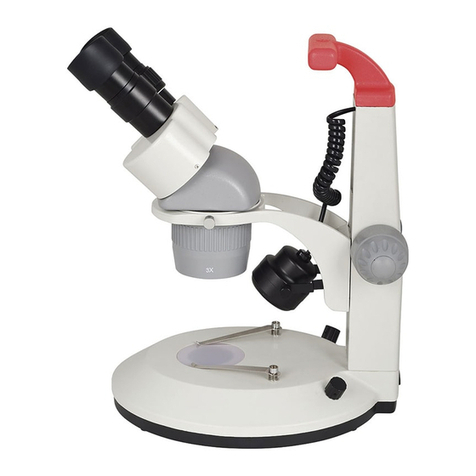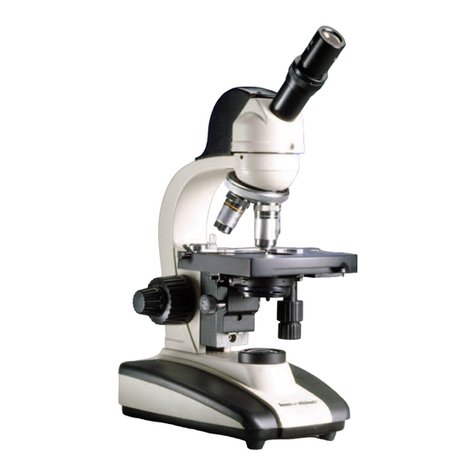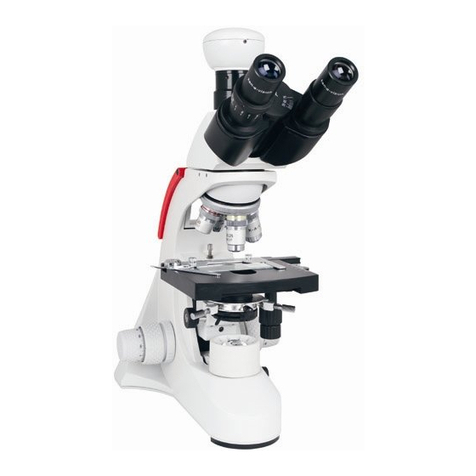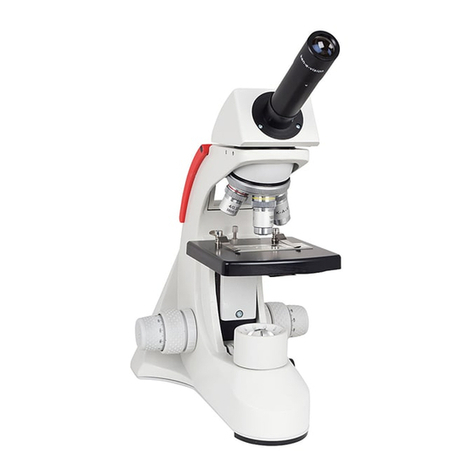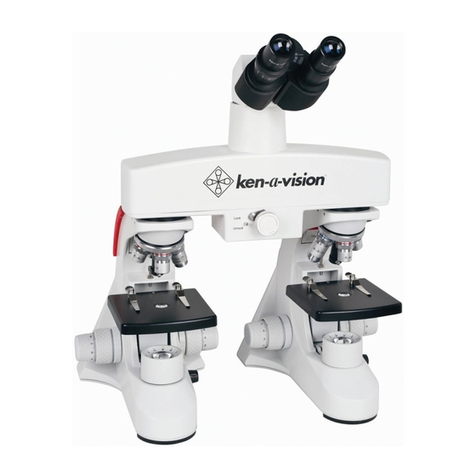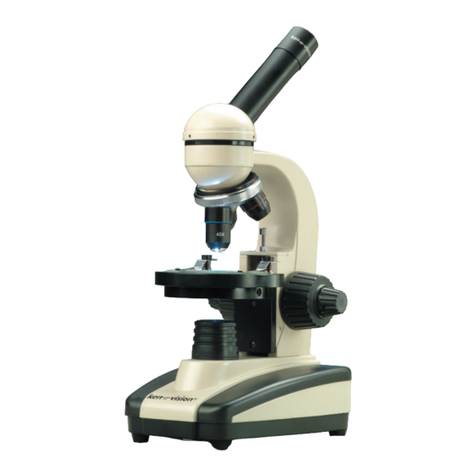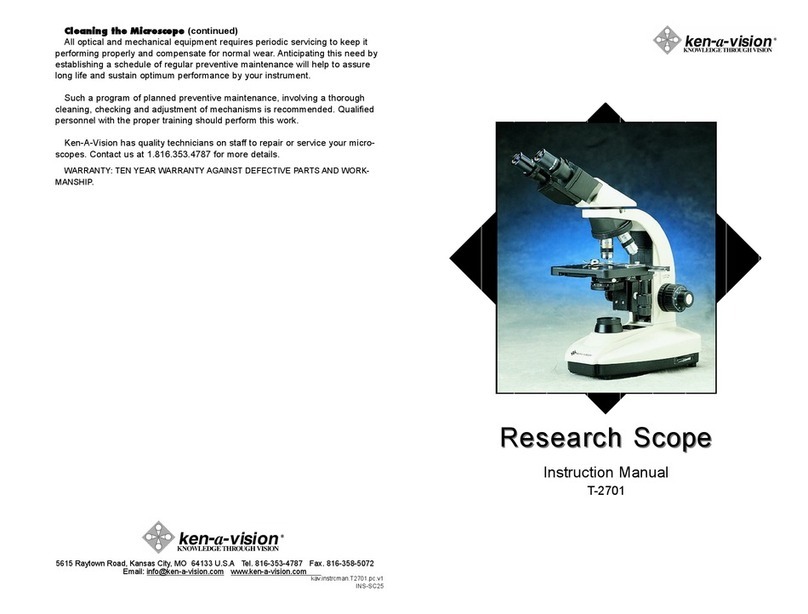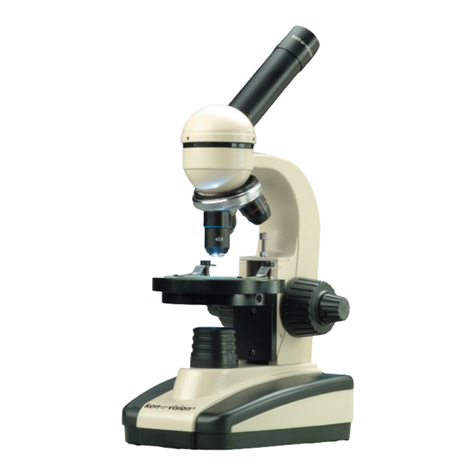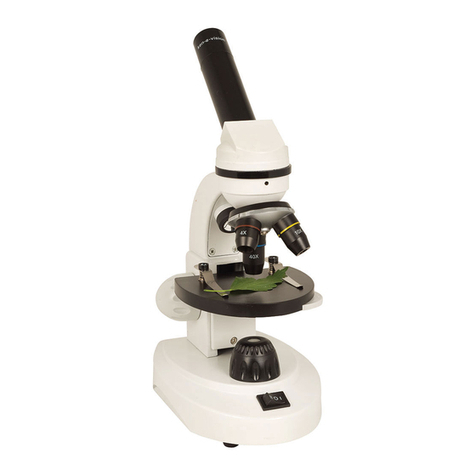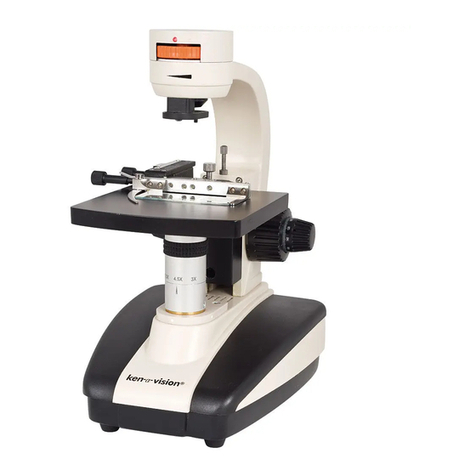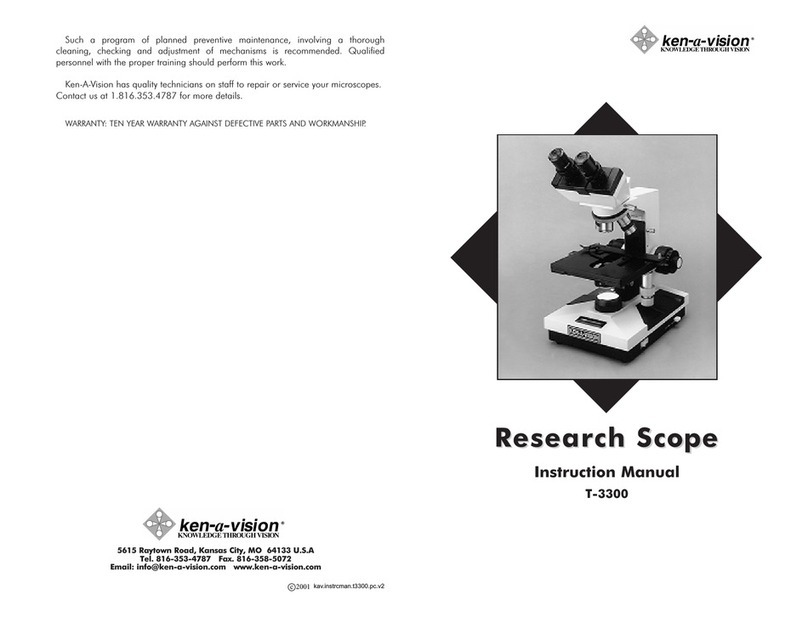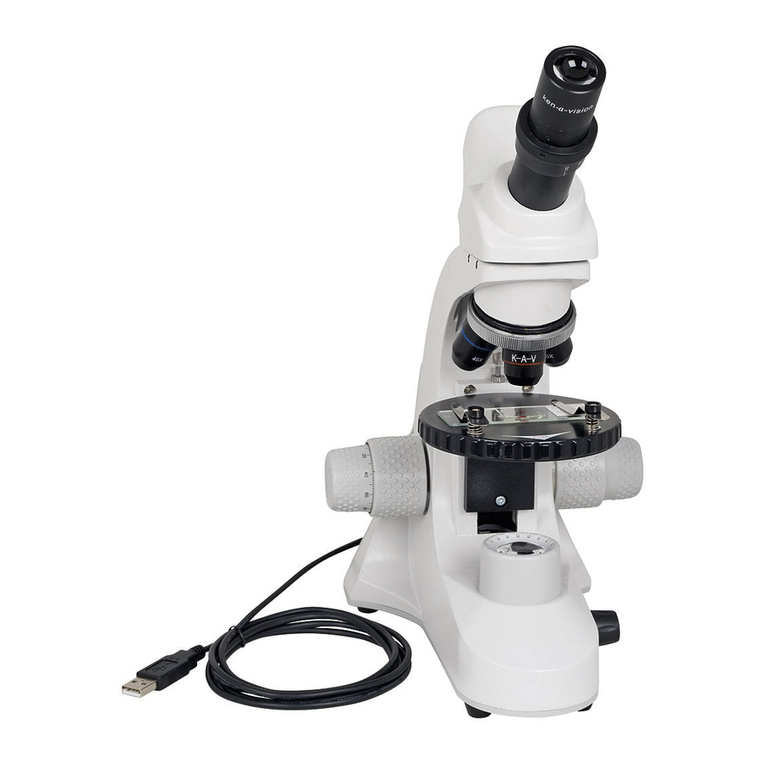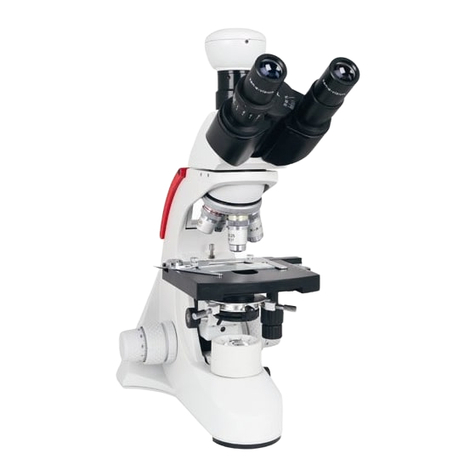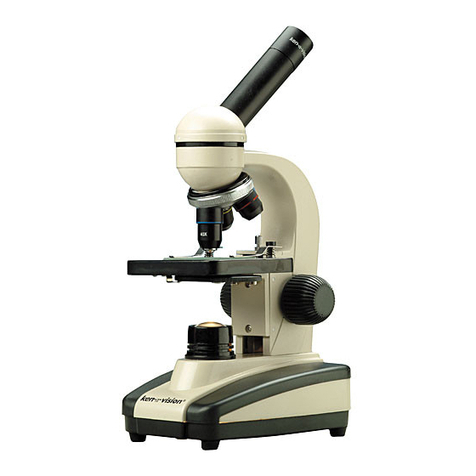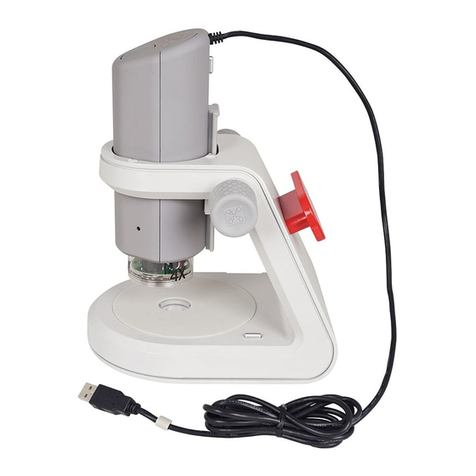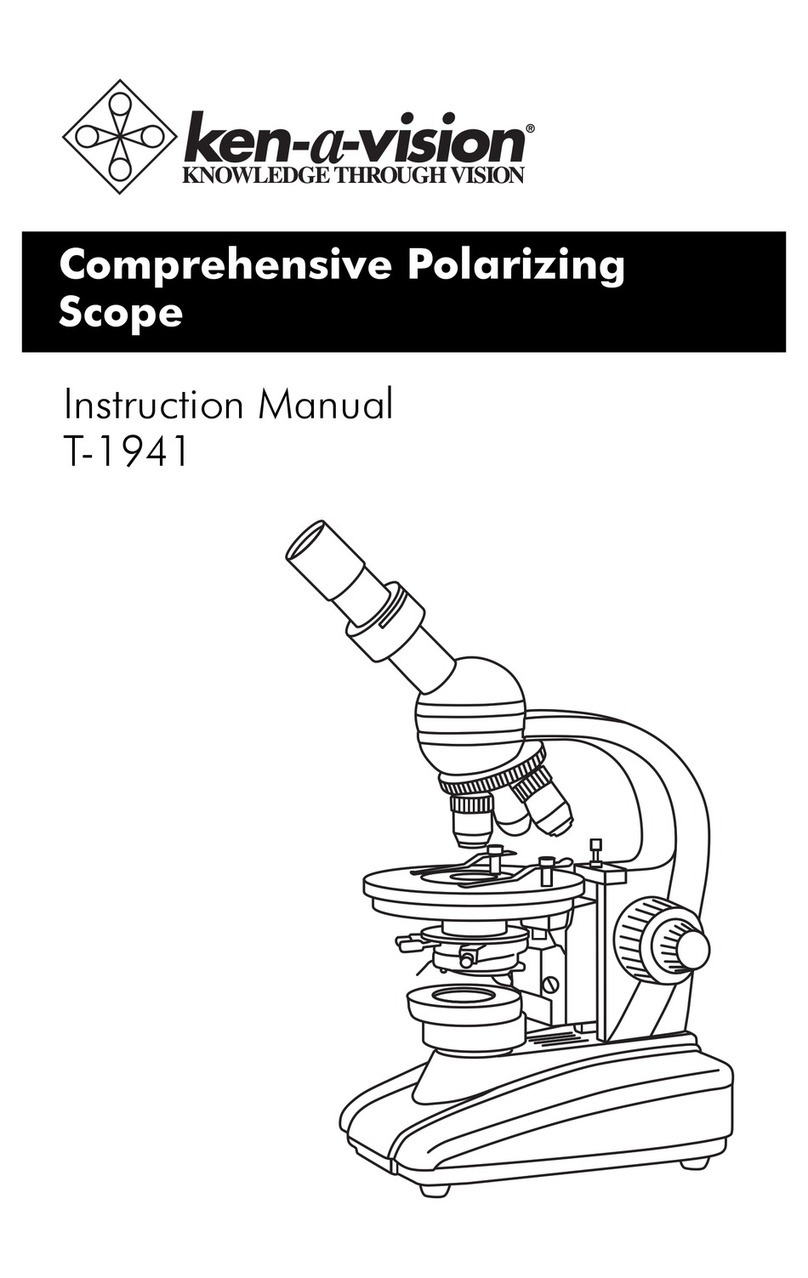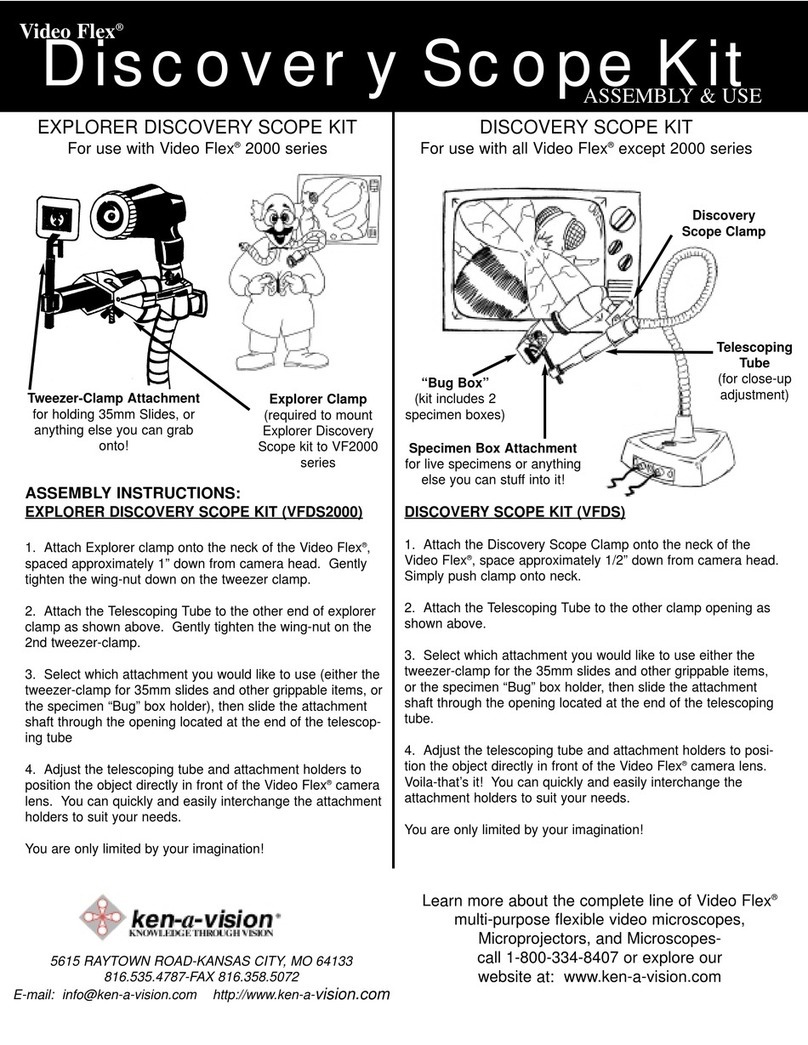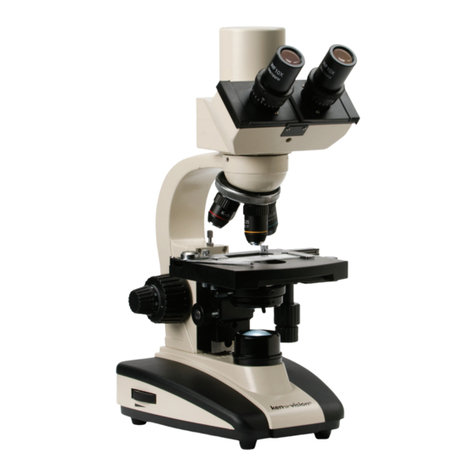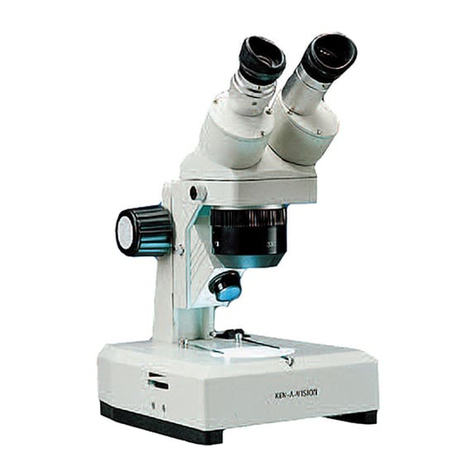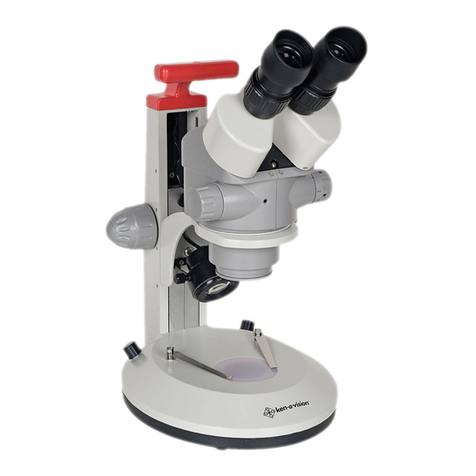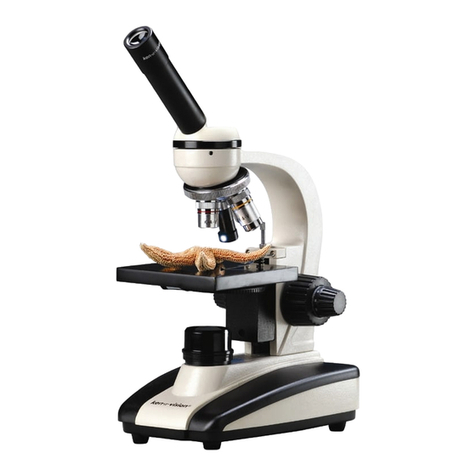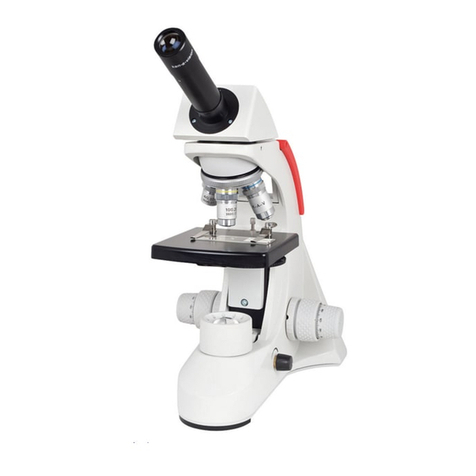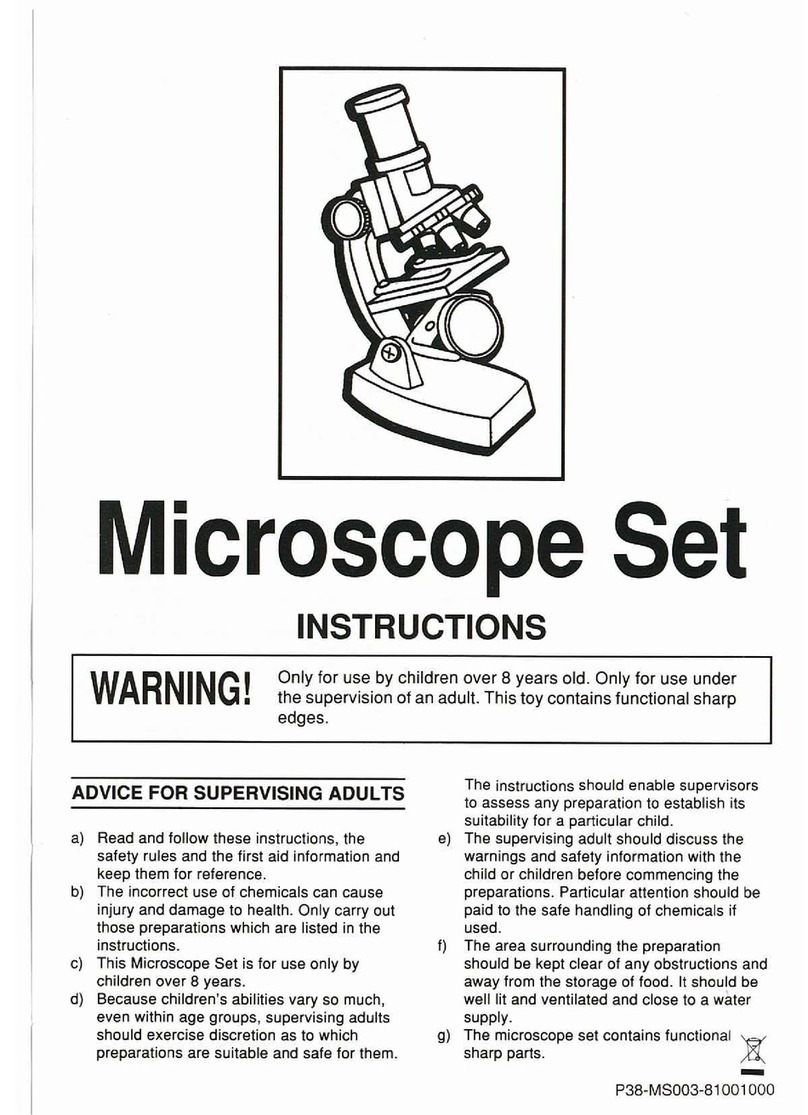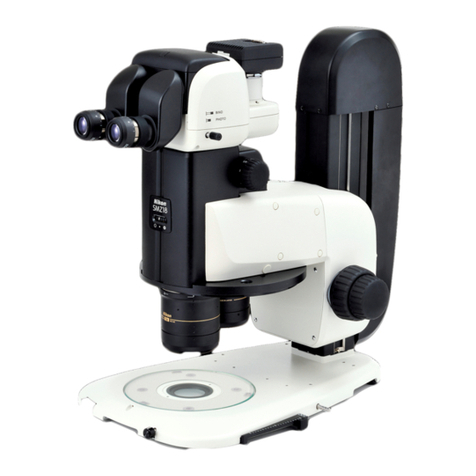Focus
Focusthe T-3300microscopebyobserving withthe10xobjective and 10x
eyepiece on theside without diopterring.Rotatethecoarseadjustmentknob to
lift the stage untilthe image of thespecimencanbe seenroughly,then rotate
the fine adjustmentknob.Asharpimage can then beobtained. (Loosen the
autofocus stop knob for free stage motion when itisnecessary). Prevent the
objectivelens fromtouchingthe specimen.(Tighten the autofocusstop tolimit
the stagemoving pastacertainpoint).Observethe imagewiththe other eye-
pieceand adjust thediopterringuntil thesharpimage isobtained. Change the
magnificationofthe objectiveasrequiredbyturning the nosepiece.
Dependinguponspecimendensityand objective magnification, thelight level
shouldbe adjusted. Ifthe lightisexcessivelyyellow, place theblue filterinthe
condenser filter holder.Toeliminatelightirregularitywhen using low-power
objectivessuch as 4x and 10x,raiseor lowerthe condenserusingthe condens-
er adjustment knob.Closedownthe condenser irisdiaphragmtothe smallest
sizeforobservingaspecimen withlowcontrast.
BULBREPLACEMENT
Beforereplacement, unplug theinstrument.Open the lampwindowinthe bot-
tomplateby pulling thewindowknob.Afterthe lamphascooled, carefully
remove it fromitssocketand replace withanewlamp. Becarefulnot totouch
the newlampwithyourfingers. Neveroperatethemicroscope illuminator unless
the lampwindowissecurelyinplace.
CAREANDMAINTENANCE
Our productisaprecisioninstrument. Routine maintenanceonyour part is
limited tokeepingthe microscope clean. Neverleavethe microscope withany
of theobjectives oreyepieces removed. Always protect themicroscope withthe
dustcover when notinuse.
Cleaningthe Microscope
Accumulated dirtonthe metal surfaceshouldbecleaned withadampcloth.If
thisisinadequate, amildsoap solution shouldbe used.The outer surfaces of
the opticsshouldbe inspected fromtimetotimefordirt and dust.Anair stream
fromarubber air bulbremovesdust best. Remove morepersistent dirtwitha
soft clothor cottonswab dampened inalcoholor amildsolution ofWindexand
water.Asmallamountofabsorbentcotton wound on the end ofatapered stick
makes ahandy tool forcleaning recessed optical surfaces. Avoidexcessive use
of solventsasthismaycause problemswithcemented opticsorthe flowing sol-
ventmay pick up greasefromthe mounts,making cleaning moredifficult.
Clean immersionobjectives immediatelyafteruse by removing theoil with
lenstissue or aclean soft cloth.Occasionallythe underside ofthe mechanical
stage fingersmay becomecoated withimmersionoil andrequirecleaning.
RESEARCHMICROSCOPE
APPLICATION
Research Microscope isaprofessional laboratoryinstrumentfor the modern
biology and medicalsciences.Itsmodular design allowsfor afull range of
accessories.
SPECIFICATIONS
•10xWidefieldEyepiece w/ pointer
•45°InclinedRotating Head
•Coarse and FineCoaxial
FocalAdjustment
•BinocularHead
•Rack&Pinon
Abbe NA1.25Condenser
•Mechanical Stage
•20 watt Halogen Lamp
MICROSCOPEPREPARATION
Setthe viewingheadontothe microscopearmandlockthe
headbytighteningthe lockscrew. Position thecondenserwiththe han-
dleof aperturediaphragmconvenientlyaccessible.Swing the filter holder out-
wardandinsert the filterwhenit isnecessary.
OPERATION
Built-InIlluminator
Plug the microscopepower cordintoasuitablegrounded electrical
outlet.Movethe illuminatorswitch tothe “ON” position.Toobtainthe desired
illumination,adjustthe lightcontroldial. Putthe specimen tobe observed onto
the stage ofthe microscopeandclampitfirmlywiththe stagefingers. Bring the
spot of specimen tobeobserved intothe centerofstage holebyrotating stage
X–Ymovementknobs.
Eyepiece
Set theinterpupillarydistance by movingthe eyepiece tubes together or apart
until thefull fieldof viewisvisiblebytwoeyes at thesametime.
